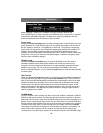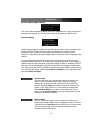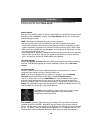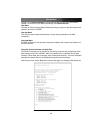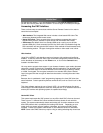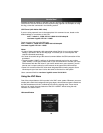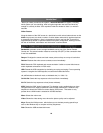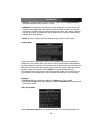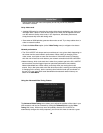
exit the terminal session. If you changed the status of the Ethernet Bridging feature,
you will also need to power the SV1115IPEXT on and off again to enable your changes.
Accessing the VNC Interface
There are three ways to communicate with the Server Remote Control unit in order to
control the host computer:
• Web interface: The integrated Web server includes a Java-based VNC client. This
allows easy browser-based remote control.
• Native VNC client: There are several third-party software programs that use the
standard VNC protocol, available in open source and commercial VNC clients.
• SSH access: By default, there is a standard SSH server running on port 22 (the
standard SSH port). Once connected via SSH, the VNC traffic is tunneled through the
SSH connection and encrypts the VNC session. Each method will be discussed briefly
in the following section. The type of encryption method or client used is not critical.
Web Interface
Using SV1115IPEXT’s web interface requires a browser, with cookies and JavaScript
enabled. To start the Java VNC client, login to the Web configuration interface and click
on the thumbnail of the desktop on the Home menu, or click on the Connect button,
located in the Main Menu.
You may need to upgrade Java support in your browser; however, most modern browsers
come with a version of Java that is compatible with this application. The Java VNC client
makes a connection back to the Server Remote Control unit over port 5900 (by default)
or 15900, if encrypted. The encrypted connection is a standard SSL (Secure Socket
Layer) encrypted link that encrypts all data from the session, including the actual video
pictures.
Because Java is considered a “safe” programming language, the Java VNC client has
some limitations. Certain special keystrokes cannot be sent, such as “Scroll Lock” on the
keyboard.
This client software requires the use of Java 2 (JRE 1.4) to enable features like wheel
mouse support. Sun Microsystems’s Java site, www.java.com, is an excellent resource to
ensure your browser and operating system are updated accordingly.
Native VNC Client
This system implements the VNC protocol, so any off the shelf VNC client can be used.
There are over 17 different VNC clients available and they should all work with this
system. This system automatically detects and makes use of certain extensions to the
basic RFB protocol that is provided by the leading VNC clients. Depending on your
needs, there are several popular freeware, shareware, and commercial VNC clients
available. Contact your system administrator or local software vendor for assistance.
NOTE: Some native VNC clients may require a flag or setting indicating they should use
Instruction Manual
22



